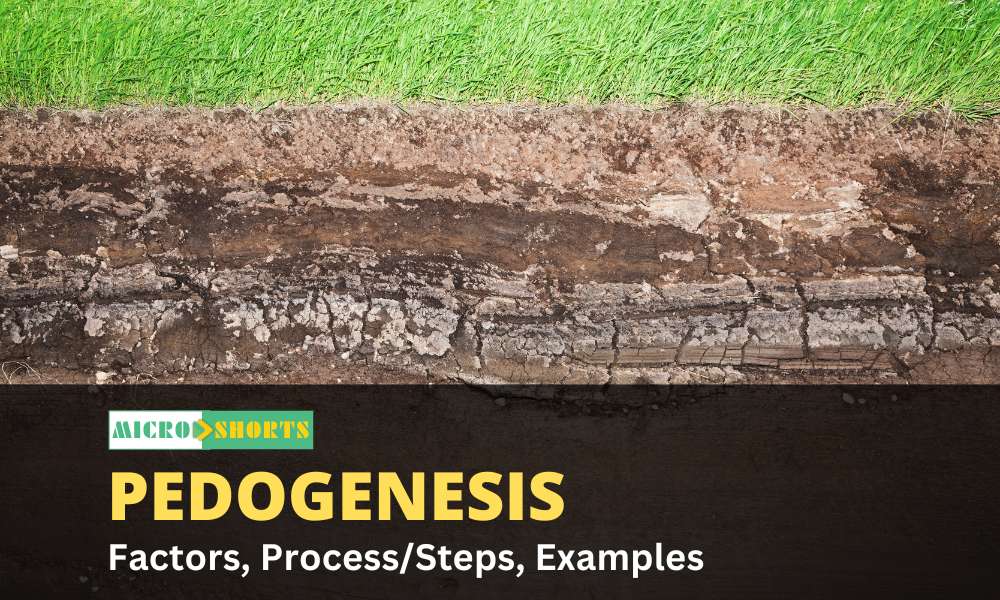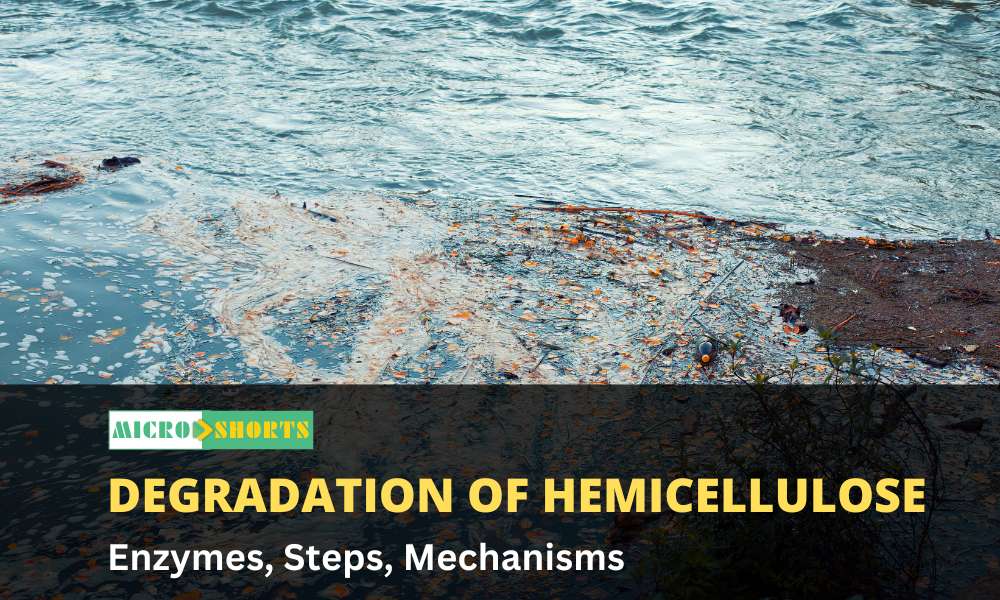Soil Formation Definition
Soil formation
or pedogenesis is the process of evolution of soil under the influence of
various physical, biological, climatic, and geological factors. Soil formation
occurs via a series of changes to the parent material, all of which lead to the
formation of layers of soil, also called soil horizons. These layers can then
be separated on the basis of the composition and other physical properties.
Factors affecting Soil Formation
There are five particular factors that influence the process
of soil formation;
Parent material
- Parent
material refers to the initial solid matter that makes up the soil.
- Parent
material might include consolidated substances like rocks or
unconsolidated particles like water deposits, volcanic ashes, or organic
matter.
- The
composition of the parent material affects soil formation as it determines
the soil composition; for example, iron-containing rocks usually result in
iron-rich soil which has higher pH and darker color.
- Usually,
parent materials are collected via wind, water, and volcanoes, resulting
in differences in the initial composition of the rock.
- The
influence of parent material can also be observed in adjacent soils that
frequently exhibit different soil profile due to different parent
materials.
- Changes
in the parent material during soil formation can be either abrupt or
subsequent over a long period.
Topography
- Topography
in the soil formation process includes factors like the geological
structure of the elevation above the sea level, configuration, and the
slope.
- The
position of parent material or soil during pedogenesis influences the
hydrologic cycle, transpiration, and other such processes.
- It
has been observed that soil profiles on the convex slopes are usually more
shallow with less distinct sublayers than the soils on the top of the
concave slopes.
- However,
organic matter of the soil at lower slopes is higher due to runoffs than
the soils at higher slopes.
- Topography
might be susceptible to changes over time by processes like soil erosion
and earthquakes, which then affects the process of soil formation.
Climate
- Climate
as a factor of pedogenesis refers to the weather as the soil evolves over
long time scales.
- These
properties might include rainfall, temperature, and storm patterns.
- The
direct effect of climate on soil formation is via water and solar energy.
Water is a medium for the life cycles of various soil organisms, whereas
sunlight affects the concentration of water on the soil.
- The
effect of climate on soil formation can be clearly seen in the case of
desert soils that are usually present around the equatorial region with
high solar and water energy.
- In
the temperate regions, however, the climate is humid, which results in
tropical soil with sufficient moisture.
Organisms
- The
process of soil formation is heavily influenced by the animal inhabitants,
the human population, and vegetation.
- In
the case of effects caused by vegetation, it has been observed that soils
present under tress tend to more acidic and contain much less humus than
those under grass.
- These
differences are observed due to the differences in the litter produced by
the two different types of vegetation.
- Human
beings also affect pedogenesis by either removal or burial of soil profile
during construction works or the modification of organic matter by
agriculture or irrigation.
- Soil
animals and microorganisms affect soil formation as they influence the
organic content of soil and the texture due to their metabolic and
physical activity.
Time
- Even
though factors like topography and parent materials are site-related,
factors like climate and organisms are flux-related, i.e. input from the
surrounding.
- Time
is a factor that is neither dependent on the site or the flux but can
bring significant changes abruptly.
- Time,
as an independent factor, however, is considered an abstract variable that
shows that the evolution of soil might change without any external inputs.
- The
effects of time on the soil profile can be observed by the composition of
the soil where the accumulation of clay and lime in the sublayers occurs
due to downward translocation.
- The
humus content in the soil horizons might also differ with aging.
Soil Formation process or steps

The soil formation process begins with a parent material
that determines the mineral composition and widely contributes to the chemical
and physical properties of the soil. There are several ways or mechanisms
involved in soil formation;
Weathering
- Weathering
is the breakdown of rocks and minerals at or near the Earth’s surface into
products that result in equilibrium with the conditions found in this
environment.
- The
products of weathering are the major source of sediments for erosion and
deposition.
- The
process of weathering can occur either via physical, chemical, or
biological weathering processes.
- Physical
weathering results in the breakdown of mineral or rock material by
entirely mechanical methods brought about by a variety of causes.
- Abrasion
of large rocks occurs when some forces cause two rock surfaces to come
together, causing mechanical wearing or grinding of their surfaces.
- Chemical
weathering is the alteration of the chemical and mineralogical composition
of the weathered material via chemical means.
- A
number of different processes, including hydrolysis, oxidation, reduction,
hydration, carbonation, and solution result in chemical weathering.
- Biological
weathering involves the disintegration of rock and mineral due to the
chemical or physical agents of an organism. The organisms that can cause
weathering might range from bacteria to plants to animals.
Accumulation of materials
- Materials
such as organic matter and decomposing materials or new mineral materials
are added to the soil by the forces of ice, water, or wind and they
accumulate over time.
- In
the case of poorly drained soils, the organic matter accumulates since
water-logging prevents it from being oxidized or broken down by soil
organisms.
- However,
in the case of well-drained soils, the accumulation of materials occurs
when the root systems hold them up.
- Particle
depositions by the forces of wind, water, or ice equally aid in the
accumulation of new materials.
- Some
plants with the help of symbiotic bacteria fix atmospheric nitrogen and
ammonia compounds into the soil as nitrates.
Leaching
- Leaching
is the removal of soluble components of the soil column by water.
- The
water washing down through the soil carries bases like calcium, held as
exchangeable ions in clay-humus complexes, as well as acidification by the
substitution of hydrogen ions.
- Through
the movement of water, wind, ice, or by the uptake of the accumulated
materials by plants, new particles including clay, organic matter, clay,
silt, or other chemical compounds get leached and eroded or taken up by
plants.
- Thus,
the physical and chemical compositions of the new accumulated materials
together with the soil parent material are altered.
Transformation
- Transformation
is the chemical weathering of soil particles, including silt, sand, and
clay minerals as well as the change of organic materials into
degradation-resistant organic matter.
- Following
transformation, the clay and other accumulated materials are washed from
the upper layer and deposited in the lower horizons.
- The
soil organisms like plants and animals are also responsible for the
transformation of the soil by the physical and chemical breakdown of the
materials.
- The
soil begins to take shape on its own through transformation, which
improves water retention capacity and nutrient composition.
Calcification
- Calcification
occurs when the removal of water via evapotranspiration exceeds
precipitation causing the upward movement of dissolved alkaline salts from
the groundwater.
- Meanwhile,
the movement of rainwater causes a downward movement of the salts.
Examples of popular Soil Formation
- A
classic example of soil formation is that of the lake beds in the
theMakgadikgadi Pans of the Kalahari Desert. The change in the
river course of the lake over the millennia resulting in the salinity
buildup and formation of different rocks.
- Another example of soil formation is the island arcs in the Philippines and Japan, following volcanoes that result in the formation of basaltic rocks. The rocks then undergo various soil formation processes resulting in various soil horizons.









Comments